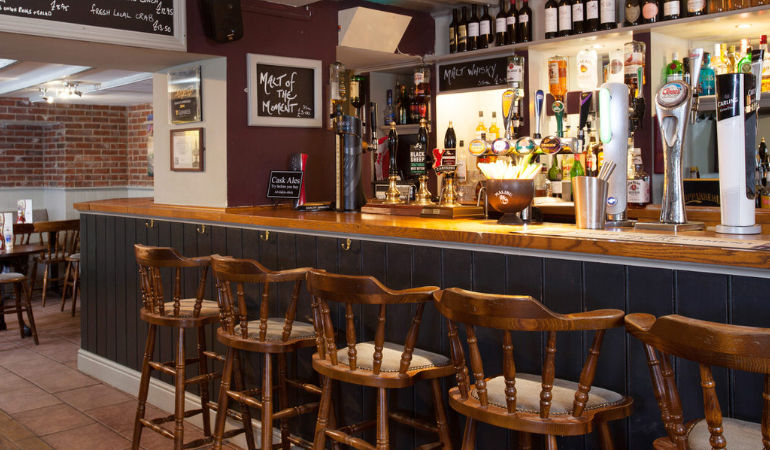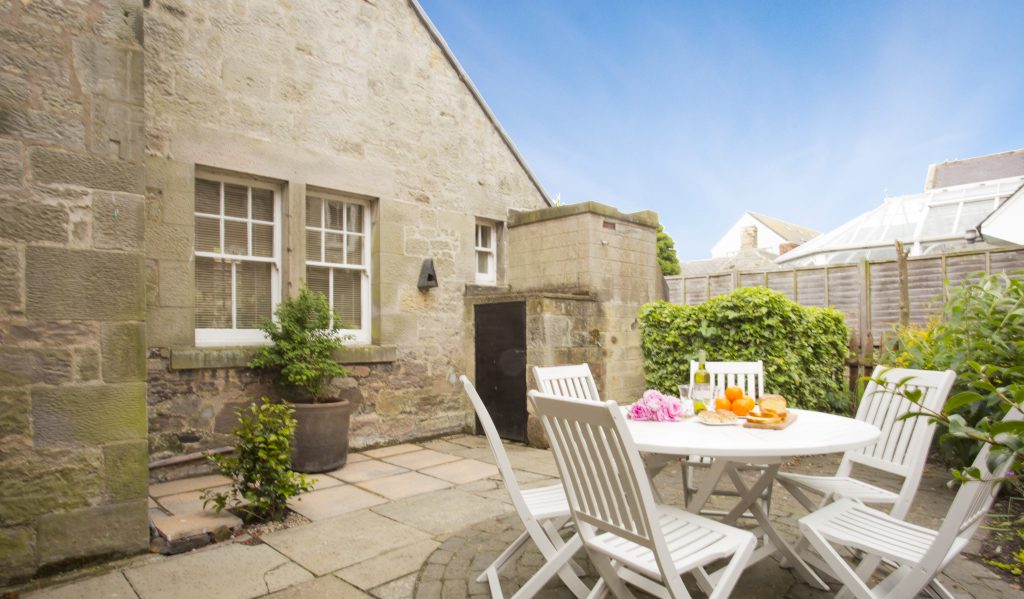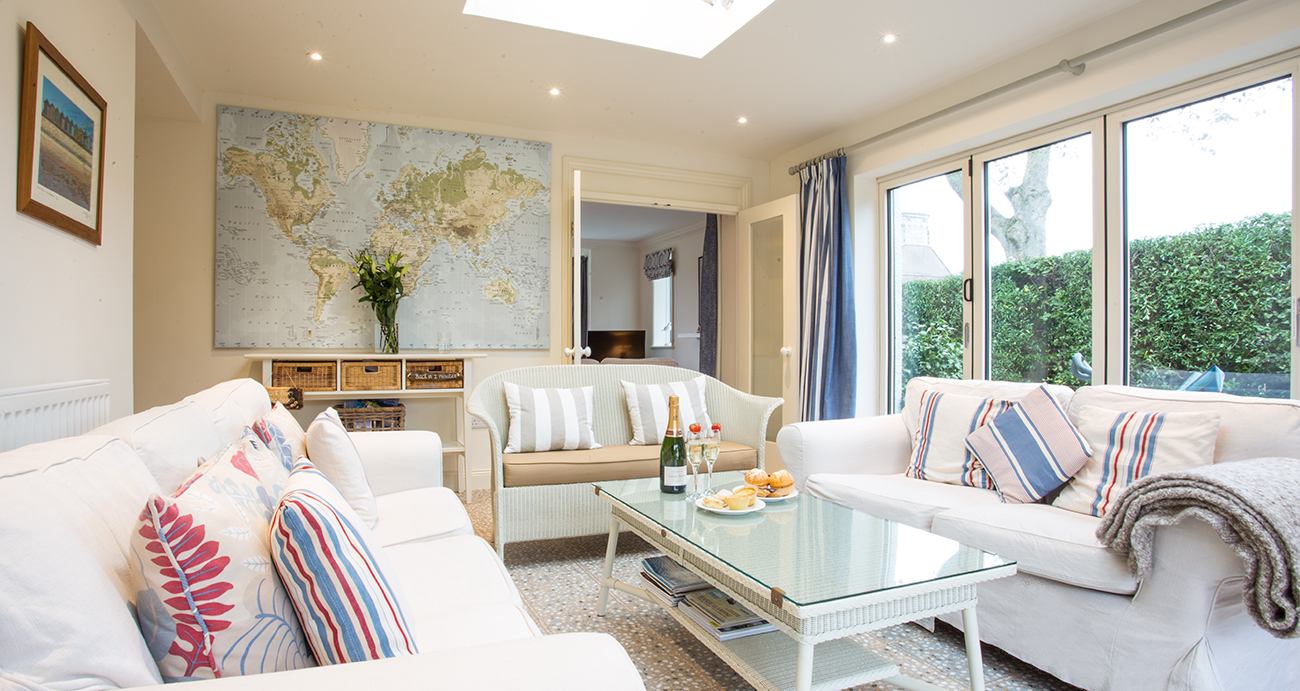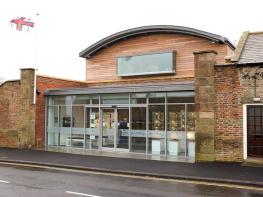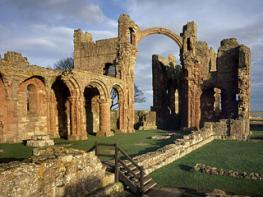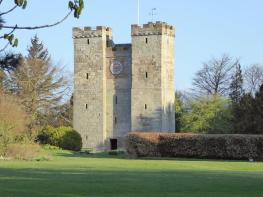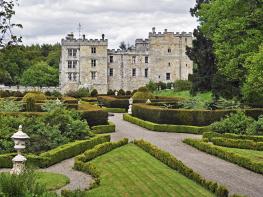The Lord Crewe is located in the heart of Bamburgh just a few minutes walk from the beach and…
Bamburgh's coast and castle

Enjoy a fine beach, rolling countryside and superb views to Bamburgh Castle and the Farne Islands
8.5 miles (13.7kms)
About the walk
For as long as people have sailed this coast, the Farne Islands have been a hazard, claiming countless lives on their treacherous rocks. The most easterly outcrop of Northumberland's whinstone intrusion, they form two main groups and comprise around 30 tilted, low-lying islands, some barely breaking the waves. Their harsh environment and isolated position attracted the early Christian saints, who sought seclusion for a life of prayer and meditation. And on Inner Farne, the largest of the group, is a restored 14th-century chapel dedicated to St Cuthbert, who spent the last years of his life there.
The early lighthouses
The first attempt to mark the Farne Islands for shipping was around 1673, when a signal fire was lit on a 16th-century tower, built by the Bishop of Durham, on Inner Farne. Later, other beacon towers were built, first on Staple Island, then, in 1783, on Brownsman. The first modern lighthouse was erected on Inner Farne in 1809 and was quickly followed by another on Brownsman. The latter actually proved a danger and was replaced in 1826 with one on Longstone. Even these efficient lights were unable to prevent every disaster, and ships continued to founder on the dangerous reefs.
An heroic rescue
The event that caught the imagination of the country, though, was the wreck of the SS Forfarshire in 1838 because of the unstilted heroism of the Longstone keeper and his daughter in rescuing the survivors. The Darlings had been keepers of the Farne lights since 1795, when Robert was appointed to the Brownsman beacon. He later took over the new lighthouse and was followed by his son William in 1815, who then moved to the new light on Longstone when it opened.
A storm was raging before dawn on 7 September 1838 when SS Forfarshire struck Big Harcar, just southwest of Longstone. William's daughter, Grace, was keeping watch with her father and spotted the wreck. Although at first neither could see any survivors, with first light, they sighted men clinging to the wave-washed rock and launched their tiny coble to attempt a rescue. They found nine survivors, including a woman, but were only able to bring five back on the first trip. William returned with two of them for those remaining, while his daughter helped the others recover from their exposure.
Grace became a national heroine, but managed to remain unaffected by the publicity and stayed with her parents at Bamburgh. Sadly, she died of tuberculosis only four years later at the age of 26. A small museum in the village tells the story and, in the churchyard opposite, there is a replica of the memorial effigy that was placed near her grave, the original having been removed inside the church for protection.
Walk directions
Walk towards Bamburgh village, where you'll find the museum and church. Our route, however, continues along the beach, reached either across the green below the castle or by following The Wynding, just beyond, then crossing the dunes behind.
Following the beach to the left, the sands soon give way to Harkess Rocks. Carefully pick your way round to the lighthouse at Blackrocks Point, which is more easily negotiated to the landward side. Continue below the dunes, shortly regaining a sandy beach to pass around Budle Point.
Shortly before a derelict pier, climb the dunes towards a Second World War gun emplacement. A waymarked path rises from a junction behind to a golf course. Carry on past markers to a gate, leaving along a track above a caravan park. At a bend, go through a gate on the left (with a blue ‘Coast Path’ marker) and continue along the field edge to cottages at Newtown.
Cross diagonally left over a track and follow a field boundary to regain the golf course through a kissing gate at the field's top corner. Bear right to pass left of a look-out and follow a waymarked route to the main road.
Turn left, walk down Galliheugh Bank to a bend and turn off to Dukesfield. Approaching the lane’s end, go left over a stile and walk past a house, crossing two stiles in the field’s far corner. Then continue by a hedge to a road. Cross to follow a green lane opposite and eventually, just after a cottage, reach a stile on the left. Make for West Burton Farm, turn right through the farmyard to a lane, then go left.
Beyond a bend go through a gate on the left, signed ‘New Shorestone’, bear half right across a field. Emerging onto a quiet lane, go over another stile opposite and continue in the same direction to Ingram Lane.
Some 300yds (274m) to the left, a gated track on the right leads away, then around to the left towards Fowberry. Meeting a narrow lane, go left to the farm, then turn right immediately before the entrance onto a green track. In the next field, follow the left perimeter around the corner to a metal gate. Through that, remain beside the right-hand wall to a double gate, there turning right across a final field to Greenhill. Keep ahead to the main road.
Continue across to the beach and head northwest to Bamburgh. Approaching the castle, turn inland, over the dunes, where a cattle fence can be crossed by one of several gates or stiles. Climb to the castle car park and follow its drive to regain the road opposite the main car park.
Additional information
Field paths, dunes and beach, 11 stiles
Coastal pasture and dunes
Can be off lead on dunes and beach
OS Explorer 340 Holy Island & Bamburgh
Pay-and-display parking by Bamburgh Castle
Bamburgh
WALKING IN SAFETY
Read our tips to look after yourself and the environment when following this walk.
Find out more
Also in the area
About the area
Discover Northumberland
If it’s history you’re after, there’s heaps of it in Northumberland. On Hadrian’s Wall you can imagine scarlet-cloaked Roman legionaries keeping watch for painted Pictish warriors while cursing the English weather and dreaming of home. Desolate battlefield sites and hulking fortresses such as Alnwick, Dunstanburgh, Bamburgh and Warkworth are reminders that this, until not so very long ago, was a contested border region. The ruins of Lindisfarne bear witness to the region’s early Christian history.
Northumberland also has some of Britain’s best beaches. On summer days, and even in winter, you’ll see surfers and other brave souls making the most of the coast. Inland, there are some great walks and bike rides in the dales of the Cheviot Hills and the Simonsides – just hilly enough to be interesting, without being brutally steep. There's dramatic scenery in the High Pennines, where waterfalls plunge into deep valleys, and there are swathes of heather-scented moorland. Northumberland National Park covers over 400 square miles of moorland and valleys with clear streams and pretty, stone-built villages. It’s just the place for wildlife watching too. You’ll find flocks of puffins, guillemots and other seabirds around the Farne Islands, and seals and dolphins offshore.
Nearby stays
Restaurants and Pubs
Nearby experiences
Recommended things to do
Why choose Rated Trips?
Your trusted guide to rated places across the UK
The best coverage
Discover more than 15,000 professionally rated places to stay, eat and visit from across the UK and Ireland.
Quality assured
Choose a place to stay safe in the knowledge that it has been expertly assessed by trained assessors.
Plan your next trip
Search by location or the type of place you're visiting to find your next ideal holiday experience.
Travel inspiration
Read our articles, city guides and recommended things to do for inspiration. We're here to help you explore the UK.









